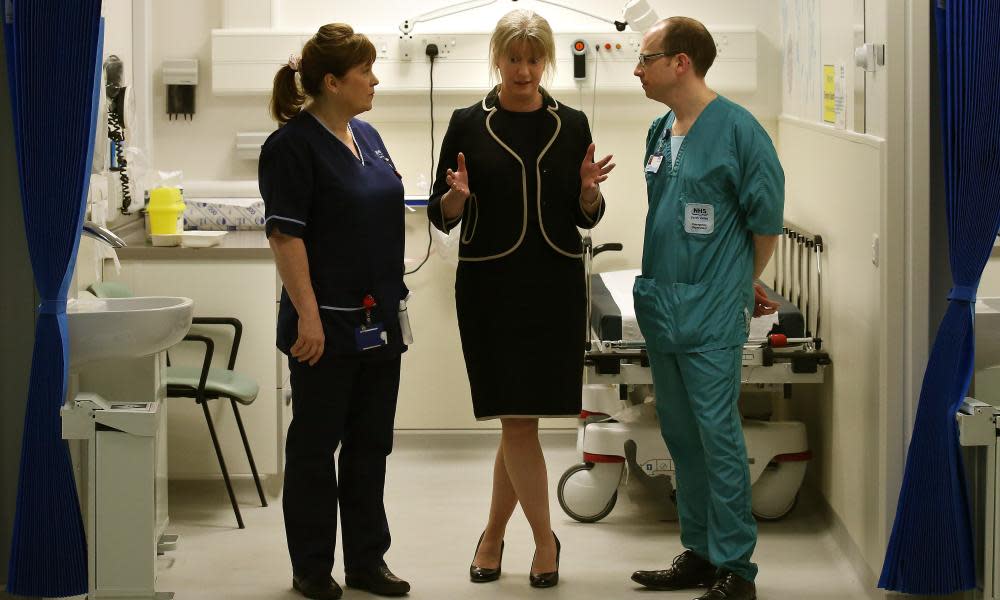Nearly 150,000 Scottish NHS staff offered minimum 9% pay rise

Scottish nurses, midwives and paramedics are on course to receive a minimum pay rise of 9% over the next three years, ending nearly a decade of pay restraint.
Health service unions have recommended their members back the deal, which will affect about 147,000 NHS staff, including hospital technicians, porters, ancillary workers and pharmacists.
Under the deal, employees currently earning up to £80,000 will receive a minimum cumulative rise of 9% and those earning £80,000 and over will receive a flat rate increase of £1,600 a year.
Shona Robison, the Scottish health secretary, said the deal was the most generous offered to NHS workers in the UK, but was tied to an agreement about changes in sickness policy, terms and conditions, and organisational changes.
It should help the NHS address significant recruitment problems in parts of Scotland, she said. Some nurses would see their wages increase by 27% by 2020-21 and some porters by 25%.
“We’re doing all we can to recruit new talent and retain existing staff, ensuring NHS Scotland has the right skills and experience to meet future demand and rising expectations,” said Robison.
NHS workers in England have been offered a three-year deal that would give those at the top of their bands a rise of 6.5%, with many other staff at a lower point in those bands to receive cumulative rises of 9-29% by 2020-21.
Miles Briggs, the shadow Scottish health secretary, said NHS staff deserved the increase. Scottish health workers earning above £26,000 would also pay higher income tax rates than their England and Welsh counterparts, he said, adding: “It was clear that a greater uplift was needed to cover this.”
The Scottish and UK governments are focusing heavily on improving NHS funding to address often significant financial and recruitment problems. NHS policy across the UK is split between the three devolved governments in Edinburgh, Cardiff and Belfast, and the UK government in London.
The UK has fewer doctors and nurses than many other comparable countries both in Europe and worldwide. According to the Organisation for Economic Co-operation and Development (OECD), Britain comes 24th in a league table of 34 member countries in terms of the number of doctors per capita. Greece, Austria and Norway have the most; the three countries with the fewest are Turkey, Chile and Mexico. Jeremy Hunt, the health secretary, regularly points out that the NHS in England has more doctors and nurses than when the Conservatives came to power in 2010. That is true, although there are now fewer district nurses, mental health nurses and other types of health professionals.
NHS unions and health thinktanks point out that rises in NHS staff’s workloads have outstripped the increases in overall staff numbers. Hospital bosses say understaffing is now their number one problem, even ahead of lack of money and pressure to meet exacting NHS-wide performance targets. Hunt has recently acknowledged that, and Health Education England, the NHS’s staffing and training agency, last month published a workforce strategy intended to tackle the problem.
Read a full Q&A on the NHS winter crisis
Theresa May, the prime minister, has confirmed the NHS in England will receive an extra £20.5bn by 2023. Nicola Sturgeon, the Scottish first minister, has already pledged NHS funding in Scotland will increase by £500m above inflation by 2021.
In advance of the three-year pay deal, Sturgeon told a Scottish National party conference two weeks ago that NHS staff would get an immediate pay increase worth £160m.

 Yahoo News
Yahoo News 
